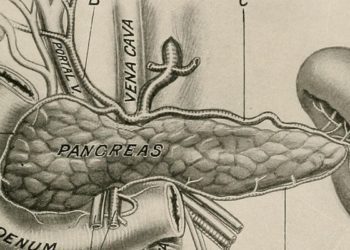Cutaneous microneedle flu vaccination reduces skin irritation and improves effectiveness [PreClinical]
1. Researchers developed a two-part method for cutaneous influenza vaccination: a microneedle array (MNs) that delivered vaccine without causing skin lesions, paired with a nonablative fractional laser (NAFL) treatment that served as an adjuvant.
2. In a mouse model, NAFL treatment followed by MNs vaccination elicited improved protective immunity against the vaccine influenza strain as well as three separate strains.
Evidence Rating Level: 2 (Good)
Study Rundown: Skin is an attractive location for vaccination because it is more readily accessible and immunologically active than muscle. This study sought to address two major challenges of cutaneous vaccination, 1) delivering vaccine to the thin tissue without causing irritation, and 2) effectively stimulating an immune response. The authors used a MNs vaccine delivery system, in which vaccine was mixed with biodegradable polymer and formed into microneedles on a patch; upon application, the microneedles embedded in the skin were rapidly degraded. When the density of microneedles on the MNs was lowered, skin lesions and inflammation were prevented. Because a lower density MNs had a decreased vaccine loading capacity, the authors investigated NAFL treatment as an adjuvant to enhance immune response. A technology currently FDA-approved for cosmetic skin resurfacing, NAFL pretreatment improved immune cell uptake of the MNs-delivered antigen. In a mouse model, an H1N1 influenza vaccine was more effective when delivered with the MNs and NAFL method compared to ID or IM bolus injections, or MNs alone. Further, animals vaccinated with the MNs and NAFL delivery method were better protected from related H1N1 strains and an H3N2 strain.
Overall, this study demonstrated a promising improvement to current cutaneous vaccination technology. Decreased pain and skin irritation will facilitate vaccine administration, while improved protection against multiple influenza strains will help in dealing with the potential mismatch between vaccine and circulating strains.
Click to read the study in PNAS
Relevant Reading: Dissolving polymer microneedle patches for influenza vaccination
In-Depth [animal study]: This study aimed to improve MNs vaccine delivery by reducing skin lesions and increasing protective immune response. Each MNs used in the study was a 6 by 9 array of microneedles that were 600µm in height and 200µm in base diameter. Microneedles were made of the biodegradable polymer polyvinylpyrrolidone mixed with antigen or vaccine.
First, the microneedle density of the MNs was optimized to reduce skin lesions. The bacillus Calmette-Guérin vaccine was encapsulated in the MNs because the vaccine effects strong skin reactions. In mice, vaccine delivery with intradermal injection or the MNs with 400µm microneedle spacing led to skin inflammation and thickening, while the MNs with 1000µm microneedle spacing did not. This 1000µm spacing was used in subsequent MN experiments.
Second, NAFL treatment was tested as an adjuvant to improve immune response. Fluorescently labeled ovalbumin protein was used as an antigen in the MNs. Compared to mice that did not receive NAFL pretreatment, mice that received NAFL pretreatment had a decreased amount of ovalbumin at the skin (measured by imaging) and an increased number of ovalbumin-positive antigen presenting cells (measured by flow cytometry).
Finally, the MNs and NAFL combination was tested as an H1N1 influenza vaccination method in mice. Compared to ID bolus injection, IM bolus injection, and MNs alone, the MNs and NAFL method resulted in significantly higher antibody titers, CD4+ immune cell numbers (p<0.001), and CD8+ immune cell numbers (p<0.01). Out of all the vaccine delivery methods tested, the MNs and NAFL combination was the only one that resulted in 100% animal survival at 14 days after virus challenge. When the vaccinated animals were challenged with two different H1N1 strains and an H3N2 strain, those vaccinated with the MNs and NAFL combination had the highest survival rates.
Image: PD
©2015 2 Minute Medicine, Inc. All rights reserved. No works may be reproduced without expressed written consent from 2 Minute Medicine, Inc. Inquire about licensing here. No article should be construed as medical advice and is not intended as such by the authors or by 2 Minute Medicine, Inc.









